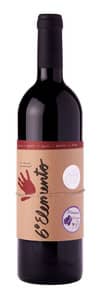This is a wine that my local dealer said I must try. And I am glad I did!
Chénas is one of the northernmost crus of Beaujolais, it sits on sandy soils on granite, and like its neighbour Moulin-à-Vent it stands for quite structured wines.
Paul-Henri Thillardon, and his brother Charles (who joined his team some five years ago), come from a family of growers in the south of Beaujolais. The 13 Chénas hectars are all certified organic, and some biodynamic techniques are also employed. Always macération carbonic. The grapes for Les Blémonts grow on clay, and will always give a fresh taste to the wine.
Chénas Les Blémonts 2015 (Paul-Henri Thillardon)
Purple colour. Cherry fruit, a light touch of orange peel, some earthy notes, mushroom, and a bit reductive. Good weight in the mouth, young tannins.
Price: Medium
Food: Veal, game, stews, hard cheeses
Leave a Comment












